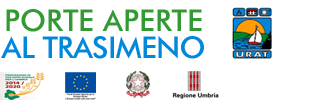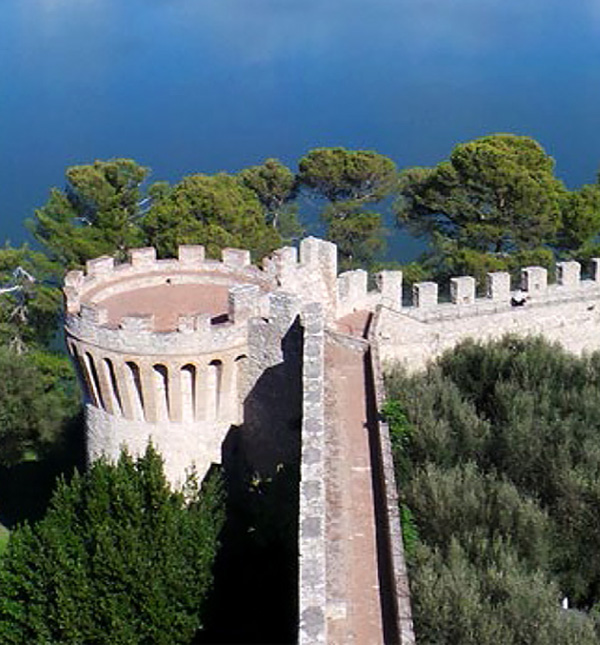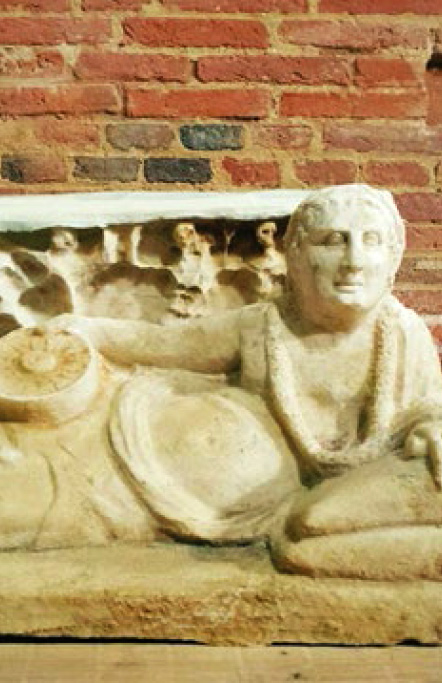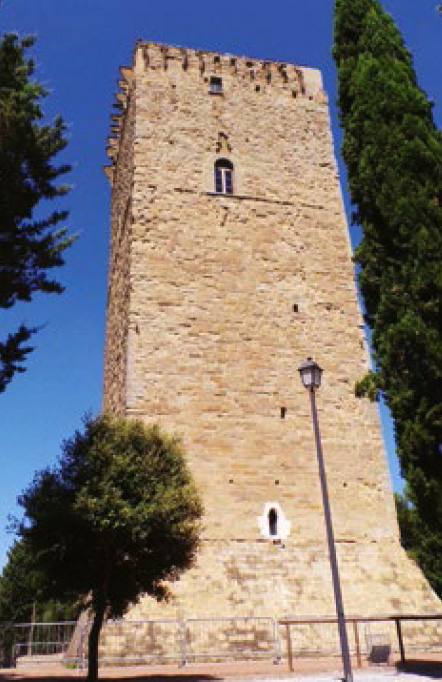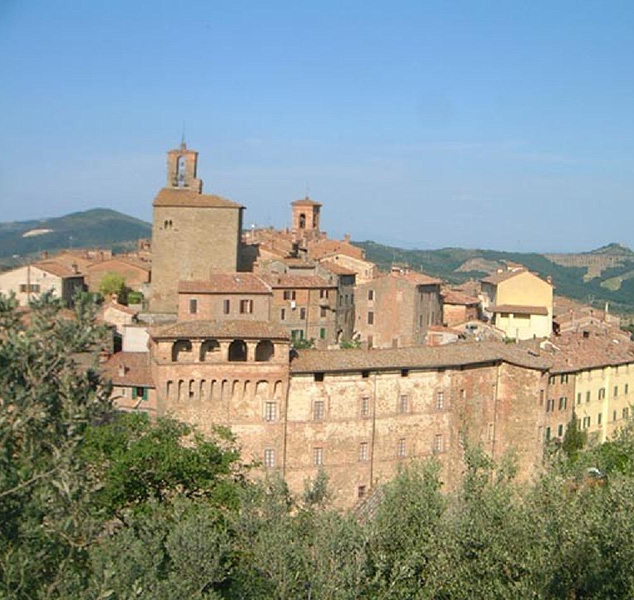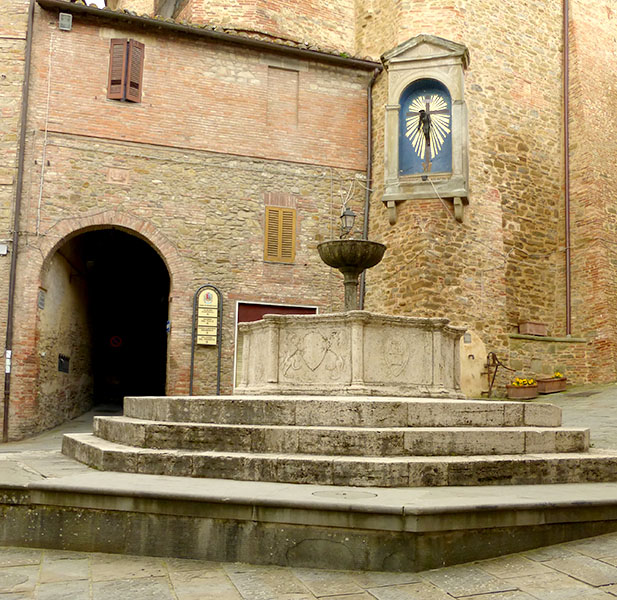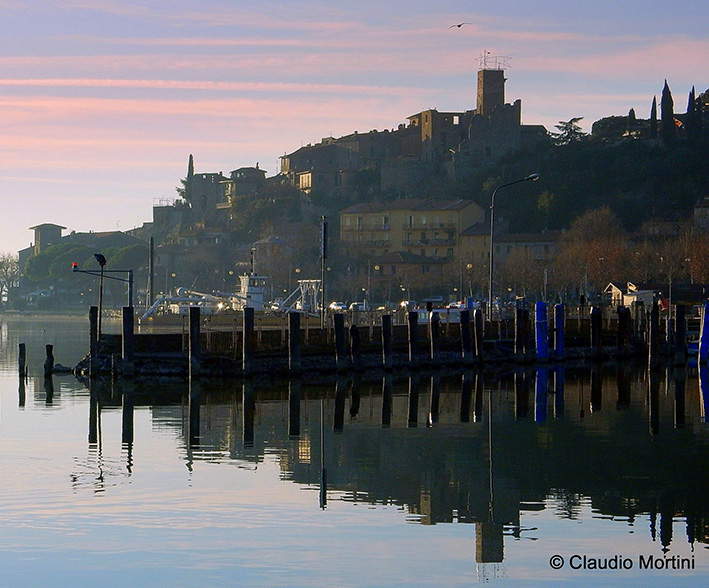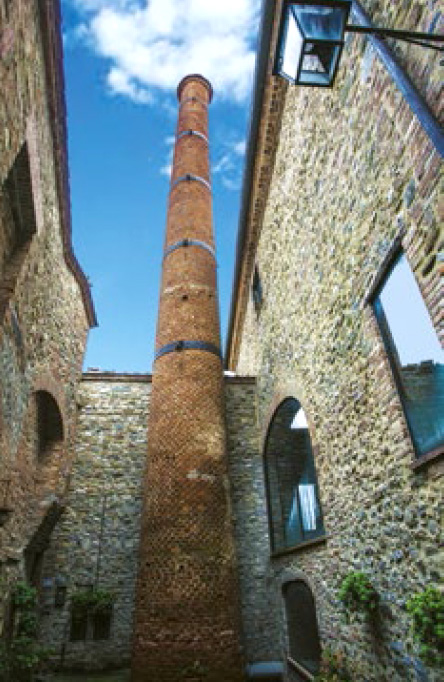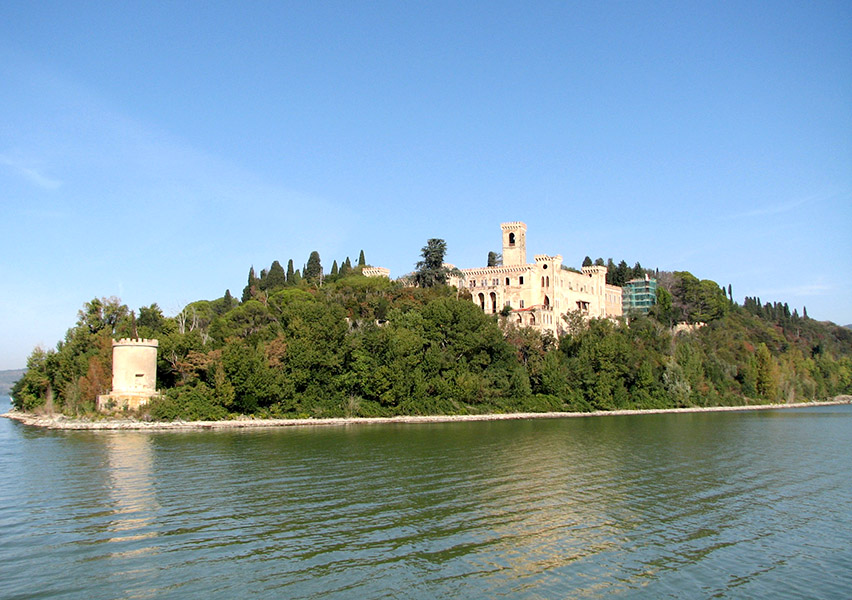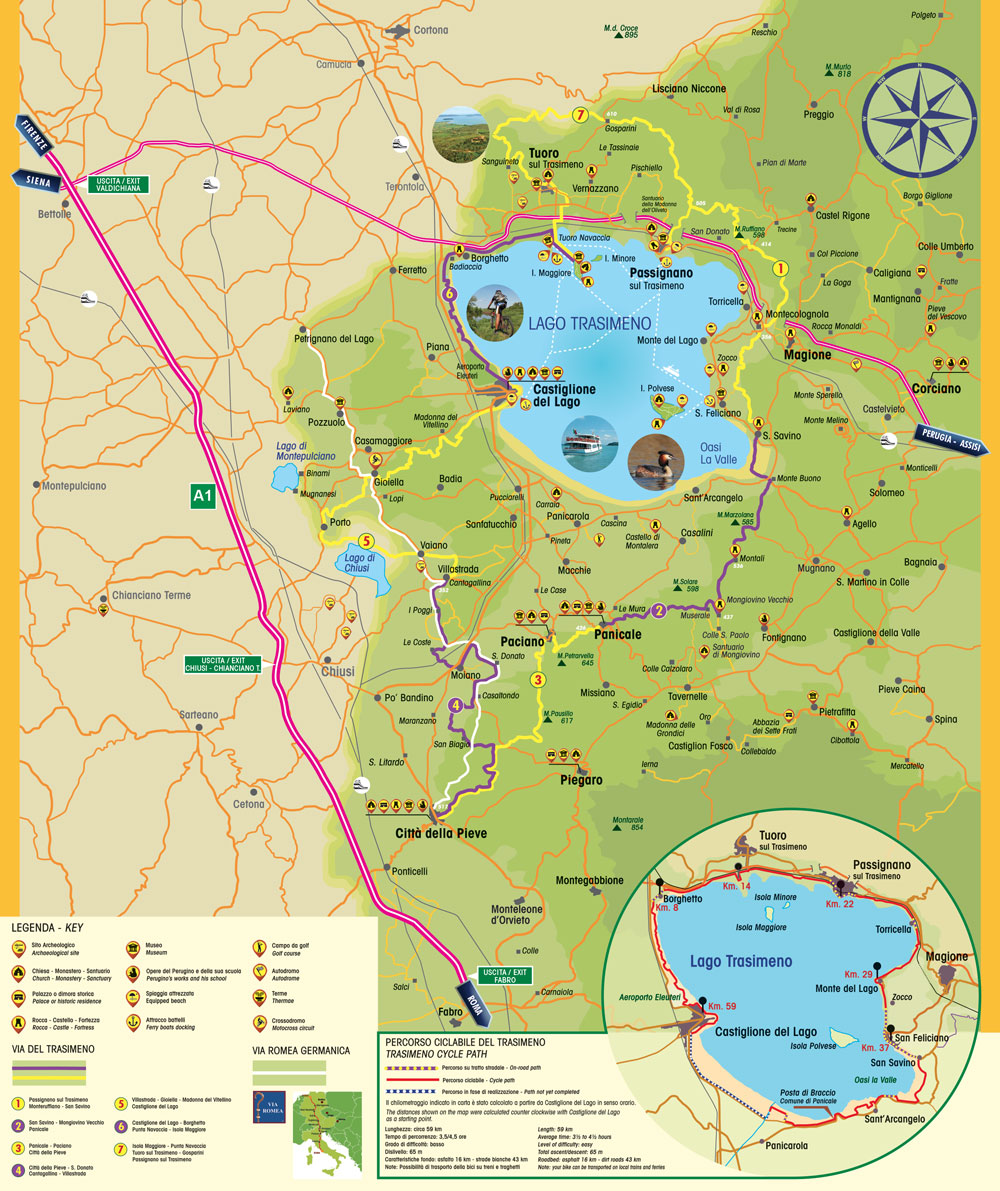WEEKENDS IN THE VILLAGES OF LAKE TRASIMENO
The enchanting villages that surround Lake Trasimeno are steeped in history, tradition, culture, art and nature, and they await you for an extended holiday or even just a weekend getaway
The Porte Aperte al Trasimeno, or Open Doors at Trasimeno, event is a series of initiatives, excursions, shows, guided tours and many other activities at very special rates
CASTIGLIONE DEL LAGO
“On the border between Umbria and Tuscany sits a charming town built by centuries of history. Castiglione protects Lake Trasimeno, its image mirrored in the water.” The town’s most important landmark is, without a doubt, Palazzo della Corgna . Originally a grand villa, it later became the Corgna dynasty’s court palace. Today it is the venue of many important cultural activities and hosts a museum that celebrates the main events of the della Corgna family in frescoes painted by the renowned artist Niccolò Circignani, also known as Il Pomarancio. The Rocca del Leone, a military fortress built in the late XII century over the remains of an Etruscan site, is connected to Palazzo della Corgna. The Rocca is a pentagonal building that was modified by Frederick of Svevia to reflect the astronomical sign of Leo. The tower that dominates the entire perimeter of Lake Trasimeno and its enchanting landscape was added in 1310. The remains of a church of probable Byzantine origin devoted to saints Filippo and Giacomo can still be seem inside the Rocca today. The walls of the castle are home to a lovely amphitheatre where, in summer, exhibits and performances of all types can be enjoyed.
CITTÀ DELLA PIEVE
Città della Pieve sits at 508m above sea level and looks out over the Valdichiana and Lake Trasimeno. The town has all the characteristics of a border town, with harmonious architectural influences from Tuscany, Lazio and, of course, Umbria. The surrounding landscape was the one that inspired native son Pietro Vannucci (ca.1450 – 1523), known as “Il Perugino”, who left behind many paintings, starting with is celebrated Adoration of the Magi in the Oratorio di Santa Maria dei Bianchi. The historical centre boasts Sienese-style buildings that date back to the early 1200s, buildings with Roman influence and others that date anywhere from the Renaissance to Neoclassical. Things to see: Cathedral – ancient church building (with baptism font) of Longobard origin. Civic Tower – Romanesque tower from the 12th century. Palazzo della Corgna – designed by Galeazzo Alessi for the family of Ascanio della Corgna. The Rocca (or Fortress) – fortification built in 1536. The Church of Saint Augustine – Built in the Gothic style in the late 13th century and modified in the late 18th century in Neoclassical style.
MAGIONE
Magione, ancient villages and unforgettable sunsets
The eastern coast of Lake Trasimeno is dotted with fascinating villages and hamlets, places rife with history and blessed with the most beautiful sunsets imaginable. There is San Savino, with its castle and triangular medieval tower; San Feliciano, a charming and ancient fishing village; Monte Colognola, a hamlet with breathtaking views and origins that date to the 1300s; Monte del Lago, an architectural jewel on an outcrop right over the lake; and Agello, which boasts an 11th century fortress.
Magione itself boasts the imposing Castle of the Knights of Malta, built in the 12th century as a fortified hospital. It has been perfectly preserved and can be toured on request. Its inner courtyard hosts concerts of the Trasimeno Music Festival in July, a prestigious international music festival directed by the famous pianist Angela Hewitt.
The ancient tower of the Lambardi also sits in Magione. It was built in the 12th and 13th century by the Cavalieri Gerosolimitani and dominates the town offering magnificent views over the surrounding countryside. It is square and 30 meters tall and has recently been restored to its original splendor. Open from April through September it often hosts important contemporary art exhibits.
PACIANO
Kieran Mulvaney, author and environmentalist, described Paciano to the Washington Post as follows: My first impression, when I got here, is that if Hollywood ever needed to shoot a film in a medieval village, this would be the one.
A visit to this lovely town should start in the heart of the historical centre, at Palazzo Baldeschi which houses the information office and TrasiMemo, located near the Don Aldo Rossi museum. As one walks through the old streets one is enchanted at every corner by the churches, decorations depicting the Madonna, the little balconies and small shops offering local delicacies and crafts, all of which, together with the City Hall on Piazza della Repubblica blend together seamlessly in a unique medieval way.
Upon leaving there are several nice walks and cultural stops, like the Madonna della Stella Church which houses a delightful Mannerist fresco cycle which recounts a star that comes to rest on the mantle of the Madonna.
Coming to this area also gives the visitor a unique opportunity to discover precious yet often unknown cultural relics, to taste local delicacies and enjoy breathtaking views when walking along the Via Romea Germanica, which was traced in 1200 when it lead from Stade in Germany to Rome, and here connects Castiglione del Lago to Città della Pieve.
PANICALE
A natural terrace overlooking Lake Trasimeno, Panicale is the birthplace of artists and leaders and retains all the characteristics of a medieval castle, the structure perched on Mount Petrarvella. The three ancient squares on three different levels characterizes its layout like so many concentric ellipses.
The main square hosts a XV century well (turned into a fountain in the 1900s ) and the impressive Collegiate Church of San Michele, while the XIV century Palazzo del Podestà (home of the Historical Archives) was built on the city’s most panoramic spot on Piazza Masolino, and obviously boasts a breathtaking view.
In addition to being one of the most beautiful villages in Italy, Panicale has, since 2007, also earned the prestigious Orange Flagfrom the Italian Touring Club for its important cultural and landscape heritage, and for the many events it hosts: the theatre season, music festivals, food festivals, embroidery courses. The Renaissance left a significant artistic imprint here through such men as Il Perugino, Raphael and G. Battista Caporali, just to mention some the great masters of that era. The nearby Mongiovino Sanctuary is considered one of the most important examples of Italian Mannerist art. Designed by Rocco da Vicenza, it houses works by Il Pomarancio, Lombarddelli, Alfani and many more…
PASSIGNANO SUL TRASIMENO
This ancient fishing village, a real gem, is set on the shore between the blue waters of the lake and the green of the surrounding hills. Its location makes it a must for anyone travelling between Umbria and Tuscany going over the pass which gave Passignano its name: Passus Jani, or Passo di Giano, the mythical god of ports. Just outside of town visitors can go hiking, cycling, mountain biking or horseback riding.
Pieve di San Cristoforo, adjacent to the cemetery on the outskirts of town, is the old parish church of Passignano and dates to the X century. The monumental church of the Madonna dell’Oliveto is in the west of town and was built in the XVI century. The Rocca (3), or fortress, probably dates to when the Longobards were here in the V-VI centuries. It has a stunning view and is opened to the public for exhibitions, concerts and plays.
The Rocca also hosts the Boat Museum. Perched on a hilltop just north of town is the hamlet of Castel Rigone, a charming blend of nature and culture ideal for visitors seeking an even more tranquil stay. It also boasts the Santuario of Maria SS. dei Miracoli, a masterpiece of Umbrian Renaissance architecture.
PIEGARO
The area of Piegaro encompasses various towns, each one steeped in history and blessed by nature: the castle of Cibottola, which still boasts much of its ancient walls and a seven-sided, 20 metre high tower, the beautifully restored Gaiche and Greppolischieto castles, the lovely town of Castiglion Fosco with its round XVI century tower, the XI century Abbazia dei Sette Frati (privately owned) complete with a Romanesque church, monastery and courtyard. Then there is Pietrafitta and its lignite mines where, 60 years ago, paleontological fossils of European importance were uncovered, now preserved in the Luigi Boldrini Museum of Paleontology. Monte Arale is 853 metres above sea level and the highest peak of the area. As you go up towards the old town of Piegaro, you will first come across an old church of the Madonna della Crocetta (XVI century) and then the ancient town walls and medieval towers. Of interest inside the town are the church of San Silvestro and the lovely XVIII century palazzo Misciattelli – Pallavicini, home to an historic residence. Piegaro’s most interesting landmark, however, is the remains of the old glass factory, now the home of the Museo del Vetro, or Glass Museum.
TUORO SUL TRASIMENO
Tuoro sits at the northern end of Lake Trasimeno, on the border between Umbria and Tuscany. Four itineraries which trace the steps of history and art have been created here.
The most important of these itineraries is the one dedicated to history and the archaeology of the Battle of Trasimeno. It meanders through the countryside which saw one of the bloodiest battles of the 2nd Punic War between the Romans and the Carthaginians. It comprises twelve stops featuring illustrated panels in four languages explaining the fine details of the battle.
The second itinerary is a nature walk through the woods along the Rio River and takes you to the lovely Vernazzano Tower, which leans dramatically to one side.
Campo del Sole is the third itinerary and features 27 sculpted columns made of local stone, known as pietra serena, set in a lovely park on the lakeshore.
The fourth itinerary is located on Isola Maggiore and is a journey into the past to explore the stay of Saint Francis on the island and Renaissance life there. It will also introduce visitors to the Irish-point lace-makers of the island. The itinerary also takes visitors to the island’s lovely frescoed church of San Michele Arcangelo, to the Documentation Centre and the lace-making museum.
